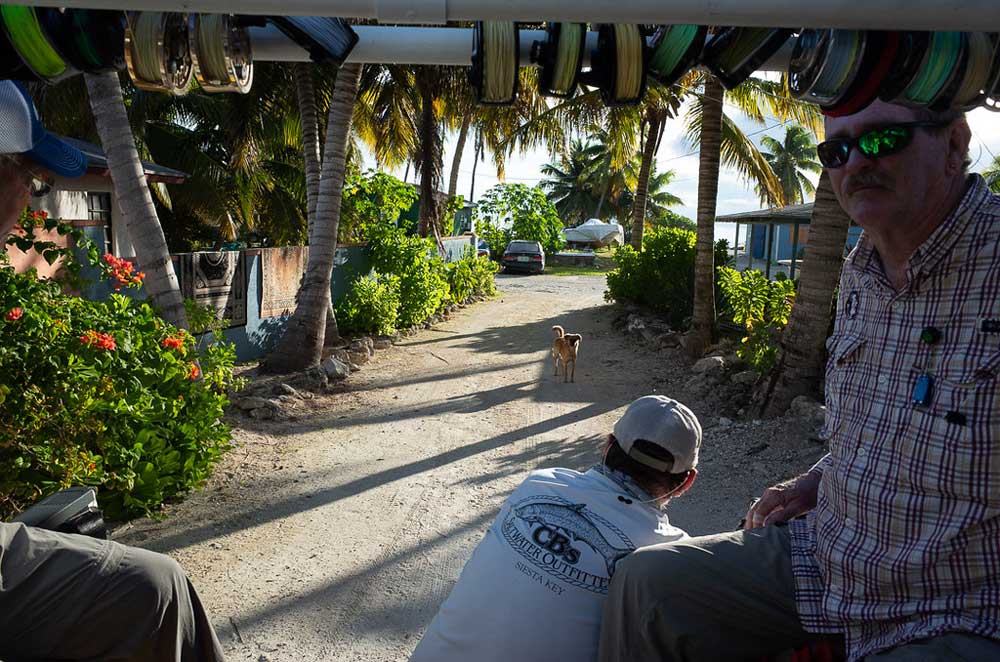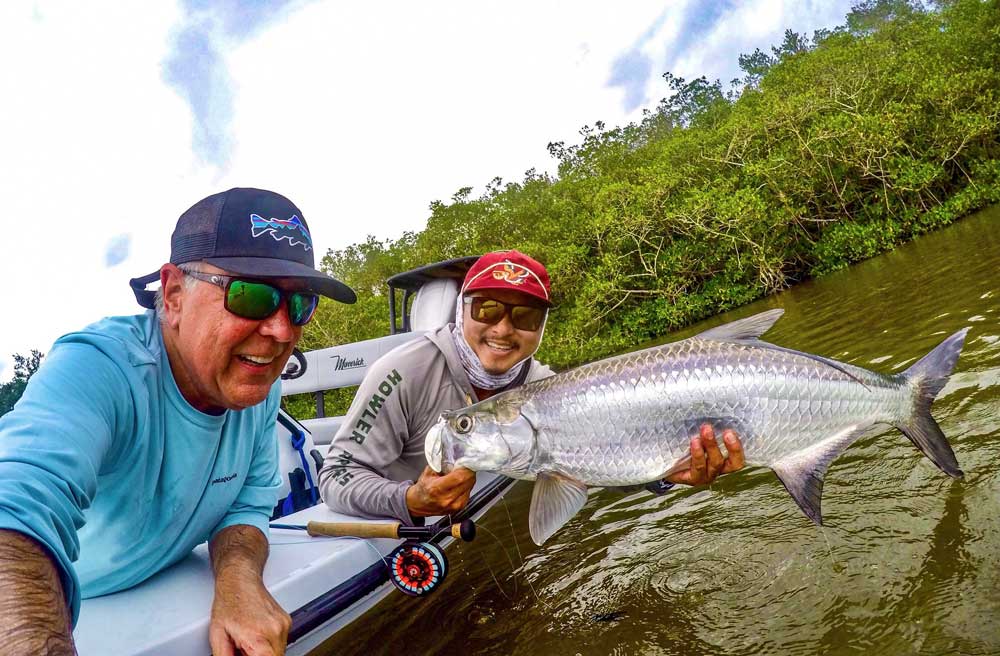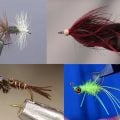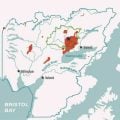How Much to Tip a Fishing Guide: Essential Gratuity Tips for Anglers

photo by stockwatchn
Picture this: You’ve just experienced an incredible day on the water with your fishing guide. The sun is setting, your arms are pleasantly tired from landing fish, and now comes that slightly awkward moment – figuring out the appropriate tip. If you’ve ever felt uncertain about tipping etiquette in the fly fishing world, you’re not alone. Let’s break down everything you need to know about showing appreciation to the hardworking folks who make your fishing dreams come true.
Tipping is an important part of fly fishing culture, and it’s essential to understand the customs and expectations in different parts of the world. Failing to tip appropriately can be a faux pas, while generous tipping can help you build relationships with guides and lodge staff and secure prime fishing slots in the future.
Understanding Guide Tips: The Basics
Your fishing guide is more than just someone who shows you where the fish are – they’re your mentor, safety expert, and often the difference between a good day and a great one. Here’s what you should know about tipping guides:
Independent Guides
- United States: 15% of the guide fee is standard for average service, with exceptional service warranting 20%. Even if things don’t go perfectly, consider 10% as a minimum.
- Caribbean/Bahamas: Plan on $40-50 per day
- Iceland Salmon Guides: $50-100 per day is customary
Lodge-Based Guides
- Standard Rate: $40-60 per day (based on Alaska rates)
- Fly-Out Trips: Add an extra $10-20 when your guide flies you to the fishing spot
- Timing Tip: Don’t wait until the end – tipping throughout the week is appreciated
Remember that tipping practices for fly fishing guides can vary widely based on location and type of fishing:
- Independent guides in the US: A tip of 15% of the guide fee is standard for average service, with a minimum of 10% even if you’re dissatisfied [from previous conversation]. Some high-end guides may expect 20%.
- Independent guides in the Bahamas and Caribbean: A tip of $40-50 per day is typical.
- Salmon guides in Iceland: Expect to tip $50-100 per day.
- Guides working from a lodge operation: The standard tip is $40-60 per day, at least in Alaska. It’s customary to tip throughout the week, not just at the end.
- Fly-out trips: Add an extra $10-20 to your guide’s tip if they fly you out to your fishing spot.
For lodge-based trips, it’s generally considered better to leave a collective gratuity for your entire stay with the lodge manager at the end of the trip, rather than tipping guides individually. This helps the lodge manager fairly distribute tips among all staff and prevents competition among guides for access to high tippers. A collective gratuity should be 7-12% of the total package cost, excluding taxes, travel, and other non-destination service charges.

photo by Gforcegerry
Lodge Staff: The Unsung Heroes
While guides often get the spotlight, don’t forget about the lodge staff who ensure your bed is made, your meals are hot, and everything runs smoothly. A good rule of thumb is to budget $75-100 per guest per week for lodge staff. This usually goes to the lodge manager for fair distribution among all staff members.
Special Considerations
- Cuba: Fishing guides in Cuba receive a small monthly salary from the government and rely heavily on tips. [from previous conversation] Always tip generously.
- Christmas Island: Tipping is not customary in the local culture of Christmas Island. This is also true for other Pacific island cultures, including Penrhyn Atoll.
- Offshore boat trips: You should tip the captain and mate(s) separately from the lodge tip. In most areas, an average gratuity is about $50 for the captain and $25 for each crew member for the entire boat. Some lodges and crews may expect higher tips.
Payment Method
Cash is the preferred gratuity method in most cases, but some lodges may prefer a different payment method, such as a credit card. Cash tips to guides are discouraged in some areas, like parts of the Amazon.

photo by mediumdun
General Tips
- Do your research: Before traveling to a new destination, research the customary tipping practices to avoid any awkward situations.
- Communicate with your booking agent: Ask your booking agent or the lodge about their tipping expectations before your arrival. They can clarify any special tipping situations unique to your destination.
- Consider tipping other staff: Think about tipping shuttle drivers, housekeepers, and other staff who provide services during your trip.
- Follow your instincts: If you’re ever unsure about how much to tip, err on the side of generosity. A little extra appreciation goes a long way in showing gratitude for a memorable fishing experience.
Keep in mind: it’s always best to do your research and confirm specific tipping customs for your destination.

Autumn tarpon, Indian River, FL with guide Capt. Willy Le | photo by Mike Edgerly
Tipping Advice For Your Fly Fishing Trip
- For independent fishing guides in the US, a tip of 15% is standard for average service. You should tip at least 10%, even if you’re dissatisfied. However, some high-end guides expect 20%. Regularly tipping over 15% could help you book peak-season slots. For exceptional effort, a higher tip is warranted. If you don’t plan to fish with a guide again, you should still tip at least 5%.
- For independent guides in the Bahamas and Caribbean, a tip of $40-50 per day is the norm. For salmon guides in Iceland, you should tip $50-100 per day.
- At most lodges, you should tip your guide directly at the end of your trip. A tip of US $30-40 per boat per day is standard for a guide who helps you succeed. You may want to tip more for special circumstances, like a grand slam.
- You should tip lodge staff a combined total of US $75-100 per guest per week. In most cases, you can give the tip to the lodge manager to distribute to the staff.
- Tipping practices vary at lodges and on package trips, so you should get as much information as possible from your booking agent or the lodge before you arrive. They can address any special tipping situations unique to your destination. You should ask your booking service or someone who has fished at the location before about tipping.
- In Cuba, fishing guides receive a small monthly salary from the government and rely heavily on tips. You should always tip generously.
- Collective Gratuity: It is generally better to leave a collective gratuity for your entire stay with the lodge manager at the end of your trip, rather than tipping staff and guides individually. Excessively tipping individuals can make it hard for the lodge manager to manage staff expectations and behavior. For example, it might lead to competition among guides to get access to high tippers.
- Collective gratuity amounts should be 7-12% of the total package cost, excluding taxes, travel, and other non-destination service charges. You should bring this amount in cash in your carry-on bag or in the form of personal checks. Traveler’s checks are not a favored gratuity method because banks may charge high fees to deposit them.
- If you want to tip a guide working from a lodge operation directly, $40-60 per day is standard, at least in Alaska. You should tip your guide throughout the week, not just at the end.
- You should tip a guide an extra $10-20 if they fly you out to your fishing spot.
- Cash is the preferred gratuity method no matter where you go. However, some lodges may prefer another payment method, like a credit card. Cash tips to guides are discouraged in some areas, like parts of the Amazon.
- You should tip the captain and mate(s) of an offshore boat separately from the lodge tip. In most areas, an average gratuity is about $50 for the captain and $25 for each crew member for the entire boat. Some lodges and crews will expect a higher gratuity, but you shouldn’t tip more than $150 per day total. You should ask your lodge or booking agent about their tipping expectations.
In addition to these tips, you should also consider tipping shuttle drivers, housekeepers, and other staff who provide services during your trip.

photo by mediumdun
You should always do research to determine customary tipping practices before traveling to a new destination. If you’re interesting in reading more about tipping, check out our article “How to Tip Fishing Guides and Lodges.”
For a general summary of things consider when deciding what to tip, keep the following in mind:
Understanding the Role of a Fishing Guide
- A fishing guide’s primary goal is to provide a safe and enjoyable experience for anglers on guided fishing trips.
- Guides work hard to ensure a successful fishing trip, including preparing the boat and equipment, and providing expert knowledge on fishing techniques and locations.
- A good fishing guide will also provide excellent customer service, making sure anglers have a great time on the water.
Factors Affecting the Tip Amount
- The type of fishing trip, such as a half day or full day trip, can impact the tip amount.
- The number of anglers on the guided trip can also affect the tip, with larger groups typically tipping more.
- The quality of service provided by the guide, including their expertise and customer service skills, can also influence the tip amount.
- The location and type of fishing, such as fly fishing or drift boat fishing, can also impact the tip amount.
- The guide fee and trip cost can also be a factor in determining the tip amount.
Determining the Right Tip Amount
- A good tip for a fishing guide is typically 15% to 20% of the trip cost.
- For exceptional service, anglers may consider tipping on the higher end of this range.
- For a half day trip, a tip of $50 to $100 is common, while a full day trip may warrant a tip of $100 to $200.
- Anglers should also consider the business owner’s overhead, including marketing, boat payments, and payroll taxes, when determining the tip amount.
Best Practices for Working with a Fishing Guide
- Communicate clearly with your guide about your expectations and goals for the trip.
- Be respectful of the guide’s time and expertise, and follow their instructions and advice.
- Show appreciation for the guide’s hard work and dedication by tipping generously.
- Consider tipping the guide separately from the lodge staff, if applicable.
The Importance of Tipping on Guided Fishing Trips
- Tipping is a way to show appreciation for the guide’s hard work and dedication to providing a great experience.
- Tipping is customary in the service industry, and guides rely on tips to supplement their income.
- A good tip can also motivate guides to continue providing excellent service and ensure a successful fishing trip.
- Tipping is not mandatory, but it is always appreciated and can make a big difference in the guide’s day.
Things to Remember
- Tipping a fishing guide is an important part of the guided fishing trip experience.
- By understanding the role of a fishing guide and the factors that affect the tip amount, anglers can determine the right tip amount and show appreciation for their guide’s hard work and dedication.
- Remember to tip your fishing guide generously, as it can make a big difference in their day and ensure a successful fishing trip.











